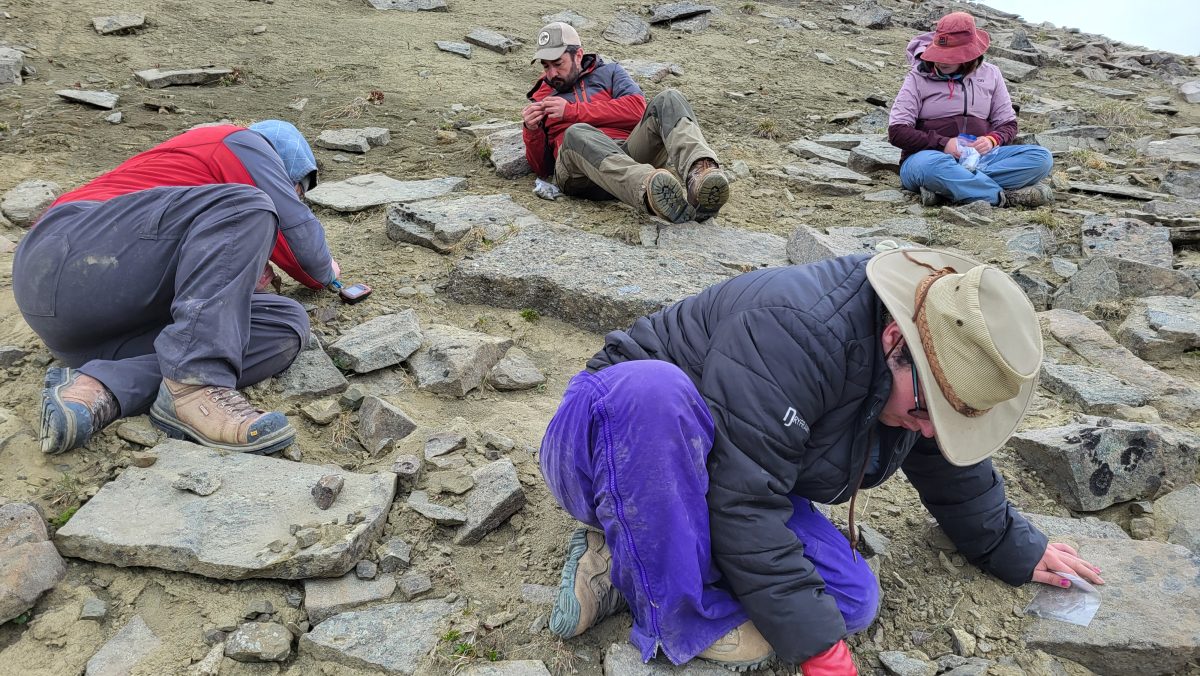The find highlights a unique climate for dinosaurs, says lead paleontologist

Photo courtesy of Royal BC Museum.
Paleontologists at the Royal B.C. Museum (RBCM) have discovered important fossils in the mountains of northern B.C.
The discovery, which took place on the Spatsizi Plateau in the Skeena Mountains this past July, was made by a group of six researchers and students.
The team found over 90 fossils, whereas in past years they’ve been lucky to find 15, says Dr. Victoria Arbour, lead paleontologist and researcher at the RBCM. She’s excited by the nearly-complete foot fossil from a small meat-eating dinosaur, which she says has given them enough information to be able to identify the exact species.
Arbour explained that it can take years to make a positive identification, because researchers have to clean and prepare the fossils before starting any other work.
“Once we have it reassembled and we’ve got a good idea of what bones we’re looking at, that’s when we start doing a lot of comparisons to species that we already know of,” she said.
Arbour, who isn’t new to identifying dinosaur species in B.C., feels that this is an especially important discovery because of its unique location.
“We’re really excited about this particular site because it records an environment that’s quite different from most of the dinosaur sites we know of in North America,” she said. Most of the classic species that we’re familiar with are found in areas that were coastal when the dinosaurs roamed, like Alberta and Montana, Arbour explained.
This site is a first because of its mountainous environment, and means one of two things for our understanding of dinosaurs in North America. Once they determine the exact species, the team will either have discovered a new range for dinosaurs that we already know, or they’ll discover an entirely new variety that is unique to its location.
Unlike past trips to the plateau, this time the team found a flat surface area with easily accessible bones, along with additional, previously discovered sites with bones buried in rock.
“We spent several days as a team up there, scouring the surface and trying to get every last little piece of bone to bring back so that we [could] try to piece things together later.”
One of Arbour’s grad students, Teague Dickson, had the opportunity to come along on the trip.
They defended their master’s thesis at UVic in August, and say that finding so many fossils out in the wild was life-changing.
“It was incredible,” they told the Martlet, adding that it was their first time ever doing this type of field research.
“It’s kind of crazy to be dropped off by a helicopter and then being like ‘Oh, I’m truly out in the middle of nowhere,’” they said, adding that “it’s every vertebrate paleontologist’s dream to find bones.”
Dickson’s favourite find was what they think might be ribcage or spine of a dinosaur that’s encased in dense rock. “They’re in this massive boulder, and they’re just poking out of the side,” they explained, noting that the rock is so large that the team had to leave it there and won’t be able to open it up to see the full skeleton.
Dickson is still interested in this discovery because they say that it’s rare for there to be such an intact skeleton in an environment that was so harsh, with its large, volatile boulders.
The fossil discoveries took place on the territory of the Tahltan Nation, with a permit from B.C. Parks. Fossils are protected in B.C., which means you need special permission to go looking for them.
Arbour noted that, with the completion of the Royal B.C. Museum’s PARC Campus (Provincial Archives, Research and Collections Building), the public will be able to visit and watch the preparation and research of these fossils in action. The facility, located in Colwood, is set to be completed in 2026.








